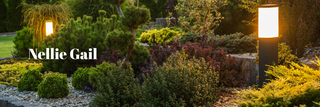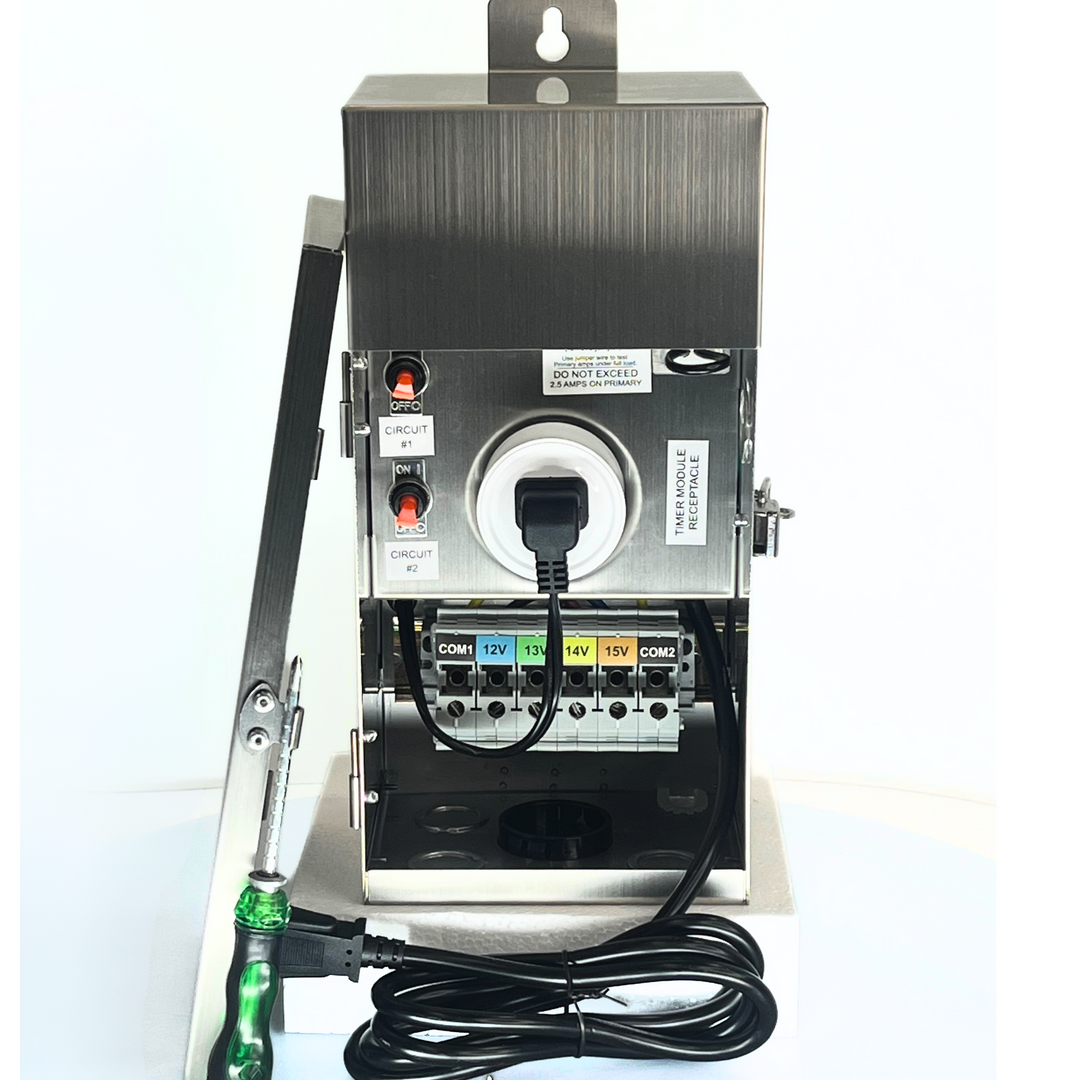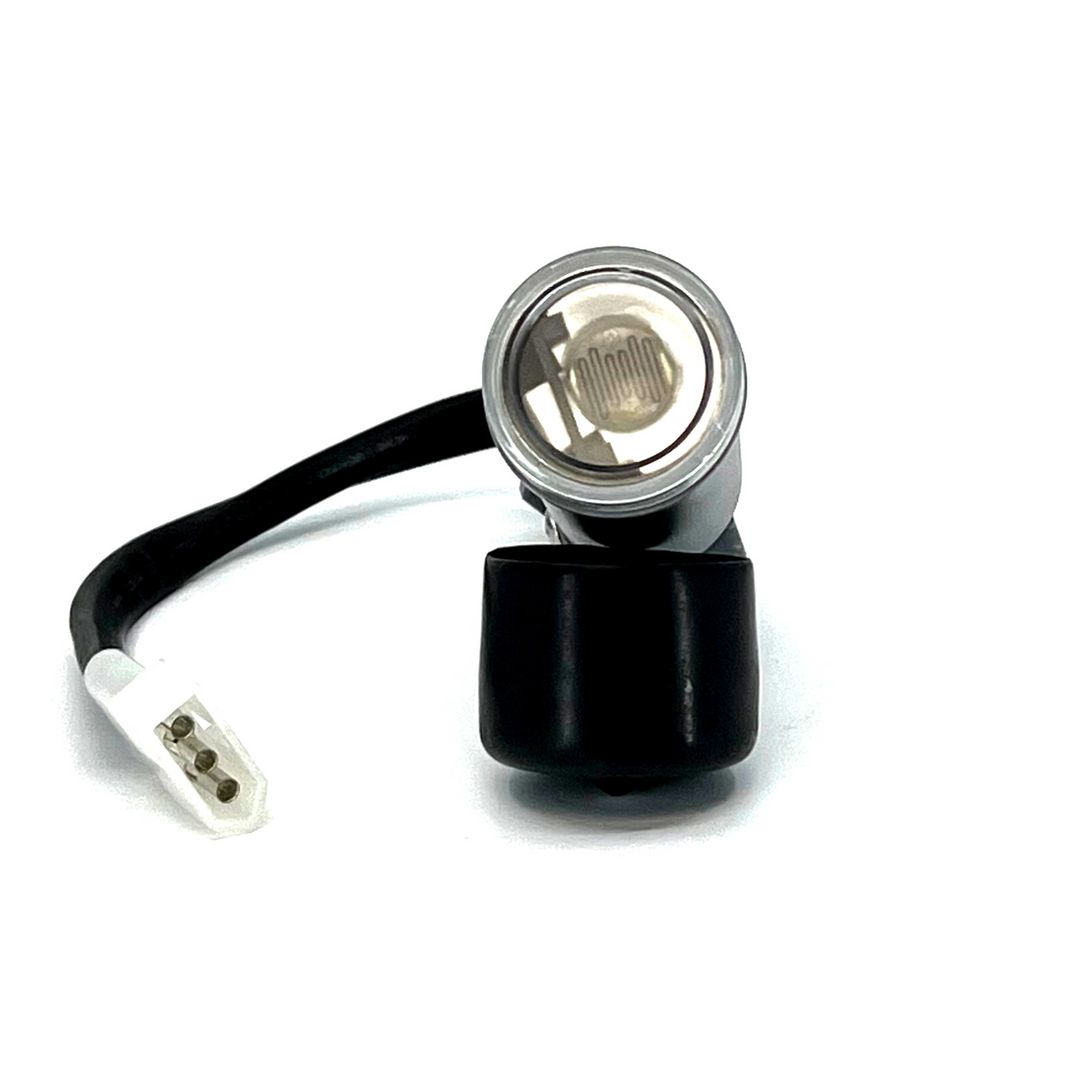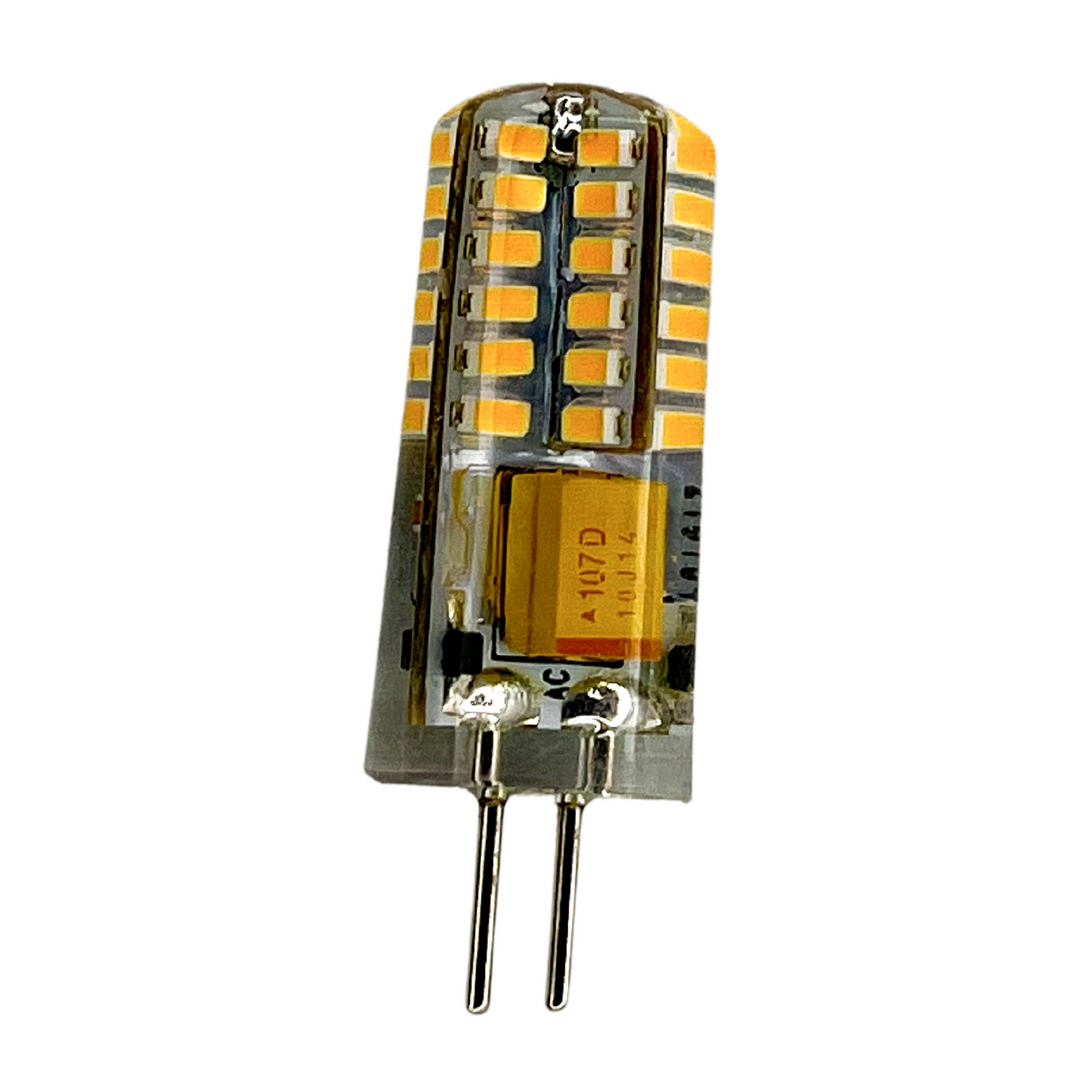
Landscape Lighting in Brea: What You Need to Know Before You Buy
|
|
Time to read 5 min
Landscape lighting is not just an aesthetic enhancement; it's a transformative investment for homeowners in Brea. This guide aims to navigate you through the essentials of landscape lighting, ensuring your outdoor spaces are not only visually appealing but also functional and safe.
Understanding Landscape Lighting
Landscape lighting encompasses a wide array of fixtures designed to illuminate and enhance the outdoor living experience. From the soft glow of path lights guiding your steps along a garden walkway to the dramatic accentuation of a century-old oak tree, the right lighting scheme can elevate the ordinary to extraordinary. It's not only about visibility; it's about creating an ambiance that extends the comfort and style of your indoor spaces to the outdoors.
Landscape Lighting In Brea: Key Components of Landscape Lighting
Transformer
The heart of any low-voltage landscape lighting system, the transformer, does more than just convert high voltage to low voltage. It's the control center that powers your lighting design, allowing for customization and expansion. Understanding its capacity and how it integrates with your home's electrical system is paramount for a safe and efficient setup.
Cables
The lifeline of landscape lighting, cables, must be chosen not just for their length and gauge but for their durability against the elements and potential wear and tear. Proper cable management ensures a discreet yet effective distribution of power, maintaining the aesthetic integrity of your landscape design.
Lights
The choice of fixtures can dramatically affect the mood and functionality of your outdoor spaces. LED lights, known for their efficiency and longevity, come in various shapes and intensities, allowing for precise customization. From floodlights that wash over a facade with a warm hue to tiny, inconspicuous LEDs that dot a pathway, selecting the right fixtures is crucial.
Planning Your Landscape Lighting Project
A well-planned landscape lighting scheme considers both the practical and artistic aspects of outdoor illumination. Start by identifying the key features of your landscape you wish to highlight. Consider functionality; areas like steps, driveways, and entryways need clear visibility for safety. Layering light—using a combination of ambient, task, and accent lighting—can create depth and interest, making your outdoor space inviting and versatile.
Installation Considerations
Deciding between a DIY project and professional installation involves weighing your comfort with electrical work against the complexity of your design. While some landscape lighting projects can be simple plug-and-play setups, more elaborate designs might require an expert touch, especially when integrating smart technology or navigating Brea's building codes.
Energy Efficiency and Cost
The initial investment in landscape lighting is just the beginning. Energy-efficient options like LED fixtures, while more costly upfront, pay off in the long run with lower utility bills and less frequent replacements. When budgeting for your project, consider both the immediate costs of installation and the long-term expenses of operation and maintenance.
Maintenance and Upkeep
To ensure your landscape lighting continues to enhance your home's beauty and safety, regular maintenance is key. This includes cleaning lenses to prevent light degradation, replacing bulbs to avoid uneven lighting, and inspecting the system for damage, especially after extreme weather events.
Enhancing outdoor spaces with landscape lighting not only elevates the aesthetic appeal of your home but also increases its functionality and safety, especially in the picturesque surroundings of Brea. This concise guide aims to illuminate the key aspects of landscape lighting, providing insights into fixture types, design considerations, energy efficiency, maintenance, and safety measures.
Fixture Types and Design Considerations
Landscape lighting encompasses a variety of fixtures designed to suit different needs and preferences. Path lights ensure safe navigation along walkways, spotlights accentuate architectural features or garden elements, and floodlights provide broad illumination for larger areas. When designing your outdoor lighting setup, it's essential to consider the unique features of your landscape and how different fixtures can complement these elements. Integrating a mix of fixture types can create a layered lighting effect that enhances both the beauty and functionality of your outdoor spaces.
Energy Efficiency
In today's environmentally conscious world, energy efficiency is a paramount consideration. LED lights have become the go-to choice for landscape lighting due to their long lifespan, low energy consumption, and minimal maintenance requirements. Although the initial investment in LED lighting may be higher, the long-term savings on energy bills and replacement costs make it a cost-effective and sustainable option.
Frequently Asked Questions
How does landscape lighting impact the overall security of a property in Brea?
Landscape lighting enhances property security by illuminating potential entry points and dark areas where intruders could hide. Strategically placed lights can deter trespassers and increase the visibility of your property, making it less appealing to potential burglars.
Can landscape lighting be integrated with smart home systems?
Yes, many modern landscape lighting systems are designed to be compatible with smart home technologies. This integration allows homeowners to control lighting remotely via smartphones or voice-activated devices, set schedules, and even adjust lighting based on occupancy or time of day for enhanced convenience and energy efficiency.
What is the best way to balance aesthetics and functionality in landscape lighting?
Achieving a balance between aesthetics and functionality involves careful planning and design. Consider both the practical aspects of lighting, such as safety and visibility, and the artistic elements, such as highlighting architectural features or creating ambiance. Using a variety of lighting types and techniques can help achieve a harmonious balance.
How important is the choice of bulbs in landscape lighting?
The choice of bulbs is crucial for both the longevity and energy efficiency of your landscape lighting. LED bulbs are highly recommended due to their long lifespan, low energy consumption, and minimal heat output, making them a sustainable and cost-effective option.
Are there any local regulations in Brea that affect landscape lighting installations?
Local regulations can vary, so it's essential to check with Brea's municipal codes or homeowner's association rules before starting your landscape lighting project. These regulations may dictate the types of lights you can use, installation procedures, and even lighting levels to ensure safety and minimize light pollution.
How can landscape lighting be maintained to ensure longevity and optimal performance?
Regular maintenance of landscape lighting includes cleaning fixtures, replacing burned-out bulbs, checking for wire damage, and ensuring that all components are functioning correctly. Periodic adjustments may also be necessary to realign fixtures that have been disturbed by weather or landscaping activities.
By addressing these questions, we provide readers with a fuller picture of landscape lighting considerations, ensuring they are well-equipped with the knowledge to make informed decisions for their Brea homes.
Three Practical Tips or Facts About Landscape Lighting:
1. Integration with Natural Elements: Emphasize the integration of lighting with the natural elements of your landscape. Consider how shadows and light play off the unique features of your garden, such as trees, water features, and sculptures, to create a dynamic and inviting outdoor space.
2. Zoning and Control: Implement zoning in your landscape lighting plan. This involves grouping lights that serve a similar purpose or are in the same area of your garden into zones. This not only allows for more efficient energy use but also enables you to control different sections independently, adapting the ambiance to various occasions or times of the day.
3. Seasonal Adjustments: Be mindful of the changing seasons and how they affect your landscape lighting. The growth of plants and changes in foliage can impact the visibility and effectiveness of your lighting. Regularly adjust the positioning and intensity of your lights to accommodate the growth of your garden, ensuring optimal illumination throughout the year.
Our Recommendation
Final Thoughts
Landscape lighting is a multifaceted investment that enhances the aesthetic appeal, functionality, and safety of your outdoor spaces. With careful planning, quality components, and regular maintenance, your landscape lighting can provide years of enjoyment and security. Book Online Now and Get a FREE Quote!













